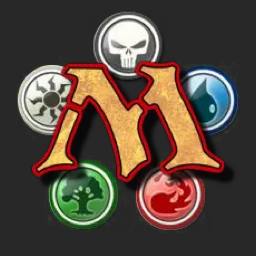A shower thought which applies not specifically to MTG, as it would obviously be a different game.
What problem does this idea try to solve?
Balancing. It is hard to balance every card during design phase (or even impossible, as can be shown), which results in some overpowered cards which make the game less fair.
How?
Supply and demand. A card which is played often (by many players, in many games) has it’s mana cost increased slightly. A card which is played rarely becomes cheaper.
Implications
This is probably not feasible with most mana costs sitting in the 1-digit-range. We can’t make a 2-cost card “slightly” cheaper. So we would either need a mana system which works with decimals (e.g. 3.1415 CMC), or raise the integer system to a higher plateau (e.g. 314 CMC)
It’s also only contemplable in digital versions, where a server can monitor every card drop, and adjust costs accordingly.
A big drawback is that your deck’s costs can change over night (or even between consecutive games), forcing players to edit their decks more frequently. A partial solution could be a notification system, and/or scheduling the recalculations to a slower frequency, like once per week or once per month.
A big advantage is that we now have an impartial Big Brother watching the balancing. Humans can err, crowds and echo chambers even more so. When people complain about an imbalanced card, is their cause justified or is it just a small but loud minority? Monitoring the cold hard data seems like a better way, and automated problem solving likewise.
What are your thoughts on this idea? Do you know another TCG which applies something similar?


One obvious problem would be that some cards are good no matter the cost. I’m going to reanimate an Emrakul even if the card costs 40 mana. Manaless dredge will still be manaless.
In some formats, this would be an excessively obtuse ban list. Obviously oversimplifying, if anything with mana value 4 or higher is utterly unplayable in Modern, any popular cards that “price out” is effectively just banned. People are playing Llanowar Elves to hit 3 mana on turn 2 for a Stone Rain or something. If the price of either changes, whether up or down, that just kills the point of trying to play them.
Could this work in a game that’s explicitly designed around live market prices? Yeah, I’m sure NFT games are ready for their comeback :P.
And now, I present without comment that time Valve tried dynamic pricing in Counter-Strike: Source and people could spam buy cheap guns until the server crashed.
Excellent point. Yeah, some things exist which are already kind of broken and could be exploited further. Maybe more generally, MTG uses CMC to balance cards, but also many other aspects (comes into play tapped, draw a card/gain life on enter, …). So only changing mana cost affects the balancing of different cards differently.
Yes, Llanowar Elves. A silly result could be that people use equivalents (like Elvish Mystic) while the “original” is too expensive. But probably, all ramp cards would probably become more expensive as long as they do the job. Which makes ramp cards kind of pointless, as you point out.
Right, two good objections and a funny video. I like it, thanks.
I was struggling to figure out how to express another problem, but I just thought of how to say it. This deeply entrenches metagaming into the game’s formats, since competitive players will even more greatly want to keep secret strategies in their pockets so the wider scene only finds out after they’ve already reaped the benefits.
Basically, it’s the Magic version of arbitrage. Everyone in Modern is sleeping on Séance, so you keep quiet about your Séance brew until it’s Pro Tour time and you get to cheese wins with an undercosted Séance.
Tangent time! During Pro Tour Amonkhet, there was a cheesy WU snake deck in draft. Some of the competitors expected Slither Blade to be badly underpicked, so forced decks full of those and Trials of Solidarity. It worked. Once this archetype went public, it stopped working because people were actually trying to pick that snake now. As far as I know, there was no other deck for Slither Blade, so this was basically insider metagame trading.
Okay, okay, paragraphs. I know you said this was about more than just Magic, but I don’t have enough confidence in my game design or macroeconomics knowledge to say anything insightful in that regard. I mean, some board games have auctions.